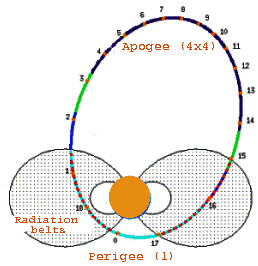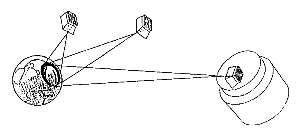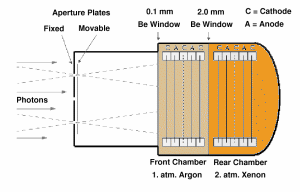The instrument
Main content
The realization of PIXIE is a coordinated effort by:
- Lockheed Martin Missiles and Space Company, U.S.A.
- The Aerospace Corporation, U.S.A.
- The University of Maryland, U.S.A.
- The University of Bergen, Norway.
The flight hardware was developed and manufactured by Lockheed, Aerospace, and Bergen, while Maryland developed the ground support equipment and associated software.
The Bergen Contribution to PIXIE
The Space Physics Section of the Department of Physics and Technology, University of Bergen, has been involved in the planning of PIXIE since 1979, and has received financial support from The Norwegian Research Council since 1985. Members of the Bergen PIXIE team have been:
- Jon Bjordal, co-investigator
- Johan Stadsnes , co-investigator
- Kåre Njøten , project engineer, electronics
- Kåre Slettebakken , project engineer, mechanical
The Bergen team had the responsibility for development and fabrication of the multiwire frames for the PIXIE proportional chambers and the attached electronics.
Proportional Chambers
The detecting element in PIXIE is two stacked proportional chambers (see sketch above). The front chamber has a 0.1 mm beryllium entrance window. Inside are two counter sections (two anode wire planes stacked between three cathode wire planes) operating in a 90% argon + 10% carbondioxid gas at 1 atmosphere. The rear chamber has a 2.0 mm beryllium entrance window. Its mechanical design is identical to the front chamber, but the chamber gas is a 90% xenon + 10% carbondioxid admixture at 2 atmospheres. The detector system is sensitive to x-rays in the 2 to 60 keV range. When x-ray photons are absorbed in the chamber gas the anode signal provides information on the photon energy while the cathodes supplies position information. To minimize the number of components and thereby minimize the contamination of the chamber gases the position readout system was based on graded density cathodes.
Wire Frames
The mechanical workshop at the Department of Physics and Technology manufactured 24 wire frame bodies of flight quality for PIXIE. Their dimensions are 262.0 x 262.0 x 5.50 mm, and they are made of a fibre glass epoxy material, Stesalit, (Stesalit AG, Switzerland). The critical mechanical tolerances are 0.02 mm. Gold plated tungsten wires (Luma Metall, Lumalampan AB, Sweden) and electronic components were mounted on the frame bodies under clean room conditions. Five frames were installed in each of the two proportional chambers on PIXIE. Some wire frame parameters are given in the table:
| Active detector area: Anode - cathode separation: |
180 mm x 180 mm 5.50 mm |
||
| Anodes | Center cathode | Top and bottom cathodes |
|
|---|---|---|---|
| Number of signal wires: Signal wire diameter: Number of edge wires: Edge wire diameter: Wire separation: |
86 12.5 µm 2+2 12.5 µm 2 mm |
175 50 µm 2+2 100 µm 1 mm |
175 30 µm 2+2 100 µm 1 mm |
| Wire material: | Gold plated W (97%), Re (3%) | ||


